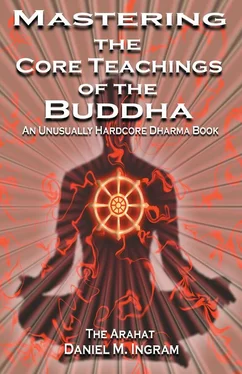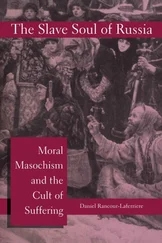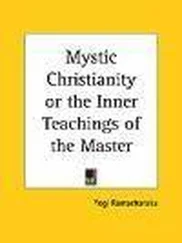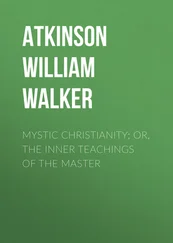Daniel Ingram - Mastering the Core Teachings of Buddha - An Unusually Hardcore Dharma Book
Здесь есть возможность читать онлайн «Daniel Ingram - Mastering the Core Teachings of Buddha - An Unusually Hardcore Dharma Book» весь текст электронной книги совершенно бесплатно (целиком полную версию без сокращений). В некоторых случаях можно слушать аудио, скачать через торрент в формате fb2 и присутствует краткое содержание. Год выпуска: 2009, ISBN: 2009, Издательство: Aeon Books, Жанр: Старинная литература, на русском языке. Описание произведения, (предисловие) а так же отзывы посетителей доступны на портале библиотеки ЛибКат.
- Название:Mastering the Core Teachings of Buddha - An Unusually Hardcore Dharma Book
- Автор:
- Издательство:Aeon Books
- Жанр:
- Год:2009
- ISBN:9781904658405
- Рейтинг книги:5 / 5. Голосов: 1
-
Избранное:Добавить в избранное
- Отзывы:
-
Ваша оценка:
- 100
- 1
- 2
- 3
- 4
- 5
Mastering the Core Teachings of Buddha - An Unusually Hardcore Dharma Book: краткое содержание, описание и аннотация
Предлагаем к чтению аннотацию, описание, краткое содержание или предисловие (зависит от того, что написал сам автор книги «Mastering the Core Teachings of Buddha - An Unusually Hardcore Dharma Book»). Если вы не нашли необходимую информацию о книге — напишите в комментариях, мы постараемся отыскать её.
Mastering the Core Teachings of Buddha - An Unusually Hardcore Dharma Book — читать онлайн бесплатно полную книгу (весь текст) целиком
Ниже представлен текст книги, разбитый по страницам. Система сохранения места последней прочитанной страницы, позволяет с удобством читать онлайн бесплатно книгу «Mastering the Core Teachings of Buddha - An Unusually Hardcore Dharma Book», без необходимости каждый раз заново искать на чём Вы остановились. Поставьте закладку, и сможете в любой момент перейти на страницу, на которой закончили чтение.
Интервал:
Закладка:
1. The standard laws of the natural world
2. The limits of their level of realization
3. The ingrained habits of the realized individual, including their personality quirks and “stuff”
4. The residue of the shadow sides of the techniques and traditions they used to attain their understanding (don’t underestimate these!) 5. The fact that mindfulness waxes and wanes (at least in arahats and below and in all realistic definitions of buddhas)
6. The fact that confusion and stupidity can still occur exactly as before 7. The limits of the relative knowledge and experiences of the realized individual
8. The psychological and physiological issues that apply to the brain and body of the realized individual
9. Their cultural upbringing and the relative mores created by it.
You will notice that this is quite a realistic and long list. Thus, the dogmas of the standard action models, while containing a few grains of truth, are simply wildly inaccurate, and generally represent some of the worst of the models of enlightenment.
287
Models of the Stages of Enlightenment
A closely related issue is the tensions between the “technically enlightened” models and the limited possible action models. There are schools of thought that say, “One enlightened action and one is a Buddha, one deluded action and one is an ordinary human being.”
These have their value from a certain behavioral point of view, and can serve as a valuable reminder to all that conventional morality tends to be an extremely good idea most of the time. I, for one, think that everyone, regardless of purported realizations or a lack thereof, should be held to a high and fairly traditional moral standard, though in some human, just, and forgiving way. However, teachings based on some arbitrary ideal called “enlightened action” can begin to diminish the importance of direct realization of the truth of things and reinforce the mythical garbage of the limited possible action models of realization.
There are people who are “technically” unenlightened (meaning that they have never completed even one progress of insight or attained to any direct understanding of emptiness or non-duality) who nonetheless live lives that would be considered unremittingly saintly by even the very highest standards. I have been fortunate enough to have met a few of these people and continue to stand in awe of them. Just so, there are those who are “technically” very highly enlightened, perhaps even arahats or buddhas, who nonetheless can appear exceedingly ordinary, seem to be of distinctly questionable moral virtue, or even sometimes be downright debauched and outrageous. I have met a good number of these also.
While the failure of the limited or enlightened actions models and limited emotional models is a huge disappointment from one point of view, it also means that there is hope for the rest of us. Our lives are it, our emotions are it, our habits are it, our limitations are it, our neuroses are it, our issues are it, and our shadow sides are it. How can we attain understanding if we do not see clearly into reality as it is? How can we see clearly into reality as it is if we spend most of our time thinking that it isn’t good enough to even examine clearly?
THE POWER MODELS
On a rather different tangent, enlightened beings are often believed to have various kinds of powers, typically extraordinary ones, and thus we have the Power Models. The converse of this is the belief that 288
Models of the Stages of Enlightenment people who have extraordinary powers might be or must be
enlightened. However, the relationship between the powers and fundamental insight are slim, though not non-existent. Psychic powers come out of samatha or concentration practices, particularly the fourth samatha jhana, though they also may arise in the stages of the Arising and Passing Away, High Equanimity, and sometimes in other stages and states as well. Some people just seem to have them regardless of their concentration or insight abilities. If you didn’t read the section on the Psychic Powers in the chapter on the Samatha Jhanas, please do so now.
Note, nearly all of the states and stages where the powers arise can be attained by beings who have not yet reached the first stage of awakening, and so we can see that there is no clear connection between nearly all of the powers and awakening. The short-list of powers that are the exclusive domain of the enlightened are attaining to Fruitions, attaining Nirodha Samapatti (a deep state described in the Appendix), and being able to talk about the dharma from their own direct experience of it. There are some other things to be said about how the stages of realization make a few other things available, but this is a subtle, complex topic that I may take on at some later time.
It is true that along the way to awakening it is hard to avoid chancing into all sorts of experiences that are described in the standard lists of the powers, and it is also much easier to develop the samatha jhanas when you are in the Review phase of a path than it is if you are not enlightened. However, developing those into powers that can be attained again and again is a completely different matter and still unrelated to enlightenment except on this one front: there is something about the direct perception of the interconnection of things that does lend a certain something to utilization and development of the powers.
Thus, we see some hint of why there are these models of awakening.
However, as stated above, these are associations and nothing more. In summary, just because someone has powers doesn’t mean they are enlightened, and just because someone is enlightened doesn’t mean they will have any psychic powers that are not directly related to their clear perception of things.
289
Models of the Stages of Enlightenment
THE TIBETAN TEN BHUMI MODEL
This is probably a good time to introduce the Tibetan Ten
Bodhisattva Bhumi Model. The word “bhumi” mean ground, or
something like level. It is a model of progressive stages of enlightenment that gets very different emphases depending on the author, but one of those emphases has to do with powers and how many duplicates of one’s self one can manifest psychically. I actually like the Bhumi model, as other takes on it have to do with giving up the notion of personal territory and realizing shunyata or emptiness and deeply integrating that into our perception, paradigm, practice, and personality. It is a model that addresses many fronts, only one of which unfortunately is the powers.
The details of the Ten Bhumi Model can be found in various
Mahayana texts, such as “The Large Sutra on Perfect Wisdom” and
“The Jewel Ornament of Liberation”. Chogyam Trungpa gives a nice description of it in The Myth of Freedom. Some texts also list other numbers of bhumis, such as 7 or 13, but they all share similar elements.
I do not consider myself an expert on this model, though I do understand the territory it covers. It is a very complex model that ascribes a wide range of exceedingly high and complex criteria involving emotions, paradigms, concentration abilities, perceptions, psychic powers and a whole host of other aspects to those of each stage. Thus, from my point of view, it is fraught with problems and assumes simultaneous, synchronized development on numerous axes, a notion I consider a bit naïve and idealized. However, like most of the teachings, it contains some very interesting points made in what I consider very unfortunate ways. Thus, I recommend you check it out cum grano salis, particularly if you want to understand Tibetan texts or do practices in that tradition.
Lining the model of the Bhumis up with the Four Paths also
involves some controversy. That the first bhumi is stream entry is straightforward. Beyond that, things get difficult. At points I have lined anagamihood up with anywhere from the 4th to the 7th bhumis and arahatship with anywhere from the 6th to 10th bhumis. These are not perfect correlations, and if you spend some time reading about the model you will see why. I recommend that you check out the sources 290
Читать дальшеИнтервал:
Закладка:
Похожие книги на «Mastering the Core Teachings of Buddha - An Unusually Hardcore Dharma Book»
Представляем Вашему вниманию похожие книги на «Mastering the Core Teachings of Buddha - An Unusually Hardcore Dharma Book» списком для выбора. Мы отобрали схожую по названию и смыслу литературу в надежде предоставить читателям больше вариантов отыскать новые, интересные, ещё непрочитанные произведения.
Обсуждение, отзывы о книге «Mastering the Core Teachings of Buddha - An Unusually Hardcore Dharma Book» и просто собственные мнения читателей. Оставьте ваши комментарии, напишите, что Вы думаете о произведении, его смысле или главных героях. Укажите что конкретно понравилось, а что нет, и почему Вы так считаете.












